With a historical, cultural and natural richness unique from that of any other country, Spain is brimming with monuments and cities protected by UNESCO (United Nations Educational, Scientific and Cultural Organization). Since agreeing upon an international treaty in 1972, UNESCO has carefully hand-picked both man-made and natural sites around the globe that are considered to be of outstanding value to humanity.
Cities throughout the world valued for their historical and cultural heritage have their own category: the UNESCO World Heritage Cities list. Spain is proud to say that it has a larger number of UNESCO World Heritage Cities than any other single country in the world. Whether they are known for their ancient universities, their Roman aqueducts, or their archaic pilgrimages, each of Spain's 13 UNESCO World Heritage Cities contributes its own unique history, culture and atmosphere.
Here's a brief run-down of the various cities that have caught UNESCO's eye.
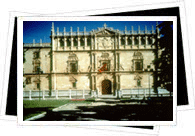 1. Alcalá de Henares
1. Alcalá de Henares
The former stomping grounds of Don Quijote author Miguel de Cervantes Saavedra and several of his Golden Age literary rivals, Alcalá de Henares was the world's first planned university city- one of the main reasons for its being named a UNESCO World Heritage City. Planners and architects wanted Alcalá de Henares to be the "ideal city" or "City of God," and the resulting concept and subsequent city later served as a model for numerous seats of learning throughout both Europe and the Americas. Head to Alcalá de Henares for a glimpse of the kingdom of Castilla at one of its cultural peaks; its monumental affluence includes Renaissance churches, convents and university buildings typical of a flourishing Spanish Golden Age city.
 2. Ávila
2. Ávila
Founded in the 11th century, tranquil Ávila maintains its medieval flavor, thanks to its pure-Gothic cathedral, its churches, its noble palaces and its immaculately conserved walls. With over 80 semicircular watchtowers and several monumental gateways in and out of the city, the wall not only continues to encircle the entire city but is also the most complete medieval wall in Spain. Along with its long-standing architectural and noble heritage, Ávila also boasts one of Spain's most important religious legacies, as it was the birthplace of Saint Teresa of Ávila.
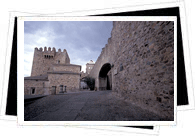 3. Cáceres
3. Cáceres
A true melting pot of cultures, the blend of Roman, Islamic, Gothic and Renaissance architecture gracing the streets of Cáceres is perhaps what attracted UNESCO's World Heritage committee. An important stop along the Roman Vía de la Plata (Silver Route) and later along the religious Camino de Santiago (Way of Saint James), Cáceres' history as a focal point in the clashes between Christians and Muslims can be seen in its architecture. Aside from the mixture of Christian and Muslim architecture, Cáceres is heavily fortified; towers are dispersed throughout the historic quarter, and buildings from churches to homes are heavily fortified.
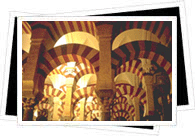 4. Córdoba
4. Córdoba
A true living museum that showcases the diverse cultures of its colorful past, the UNESCO World Heritage City of Córdoba is a veritable treasure chest. Think of the charming centuries-old historic quarter, whose white-washed buildings and labyrinth of winding streets date back to Moorish times, as the foothills leading up to a great mountain, the mountain being Córdoba's Mosque-Cathedral. Back in the day, Córdoba was the refined capital of the affluent Moorish Umayyad Caliphate- hence the jaw-dropping Mosque. When Spain finally managed to overtake the city, the ultra-Christian monarchy opted to plop a full cathedral right smack into the middle of the mosque. Not only does it point to the sheer size of the original mosque, but it was also a symbolic act meant to show Christianity's domination over Islam.
5. Cuenca
Originally built up by Moors as a defensive stronghold in the heart of the Umayyad Caliphate of Córdoba, Cuenca is a medieval fortified city in a near immaculate state of preservation. Due to its Muslim origins, militarized nature and subsequent 12th-century Christian overtaking, the city boasts a exquisite architectural mix of Moorish homes and Christian buildings spanning numerous centuries that led to its eventual UNESCO World Heritage status. Along with its cobbled streets and preserved original townscape, Cuenca's stand-out highlights include Spain's very first Gothic cathedral as well as the famous "casas colgadas" (hanging houses), which hang precariously over the edge of sheer cliffs.
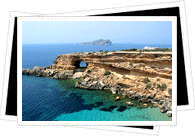 6. Ibiza
6. Ibiza
Situated in the Islas Baleares (Balearic Islands), UNESCO's World Heritage committee recognized Ibiza's unique cultural and historical legacy, demonstrated both through the historical city and the archaeological sites around its periphery. From the monumental area of Dalt Vila to the necropolis of Es puig des molins adn the archaeological site of Sa Caleta, the remnants of Ibiza's ancient Phoenician and Carthaginian cultures shed light on the island's role in the earliest Mediterranean trade and economy. The very different Alta Vila (Upper Town) is, on the other hand, one of the best examples of Renaissance military architecture. During the 15th and 16th centuries, the fortified walls would serve as a model for the development of fortifications in Spanish colonies throughout the newly discovered Americas.
7. La Laguna
Yet another Spanish UNESCO World Heritage City located off of the mainland, you can find the historical and now university town of La Laguna on the island of Tenerife in the Islas Canarias (Canary Islands). La Laguna's claim to fame and one of the major reasons for its UNESCO World Heritage status is its being the first non-fortified Spanish colonial town. It consists first of the original "unplanned" Upper Town and then the "planned" Lower Town. Planned out using philosophical principles, the layout - highlighting organization, wide streets and open spaces - provided a model for slews of non-fortified colonial towns in the Americas. Throughout the immaculate historical city you will find perfectly conserved churches and noble homes demonstrating the picturesque Canarian architecture of the 16th through 18th centuries.
8. Mérida
Recognized by UNESCO's World Heritage committee as one of the best-preserved archaeological sites in Spain, Mérida was not only a major stop along the Roman Vía de la Plata (Silver Route), but was also the capital city of Lusitania back when the Roman Empire extended throughout the Iberian Peninsula. Amongst the incredible sites, check out the theater, the amphitheater, the bridge and the Temple of Diana.
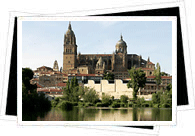 9. Salamanca
9. Salamanca
Nicknamed the "Golden City" for the glow of its sandstone buildings under the gleaming sun, Salamanca became the hub of Spain's intellectual, cultural and religious life after its historic university was founded in 1218. Once considered to be one of the world's four "leading lights" along with the universities at Bologna, Oxford and Paris, the university's fame triggered an architectural flourishing. A hodgepodge of Romanesque, Gothic, Moorish, Renaissance and Baroque styles grace cathedrals, noble palaces, academic institutions, monasteries and more. Plus,
the university still welcomes thousands of university students each year who invigorate the ancient streets with a youthful vibrance- especially once the sun goes down!
10. Santiago de Compostela
Easily one of the world's most beautiful cities, Santiago de Compostela has certainly been a welcome sight for the pilgrims who have spent days, weeks and even months traipsing across the Camino de Santiago (Way of Saint James) over the more than one-thousand years of its existence. The final destination of the religious pilgrimage and allegedly the final resting place of Saint James' remains, Santiago's centerpiece is its jaw-dropping cathedral. Principally Romanesque in style, its construction began in the mid-11th century. Be sure to take in the stunning Romanesque doorway, the Pórtico de la Gloria. The historic city grouped around the religious temple is a veritable wonderland of stonework.
11. Segovia
If you're looking for variety, the UNESCO World Heritage City of Segovia won't disappoint. Along with surviving sections of the medieval wall, a 16th century cathedral, tons of churches and a picturesque historical quarter, it has an 11th century castle credited with inspiring Walt Disney's Cinderella Castle and a remarkably well-preserved Roman aqueduct. Built in the first century, A.D., the aqueduct is easily Segovia's most photographed landmark. Running right smack through the city, it's not hard to see why!
12. Tarragona
Once a provincial capital in the Roman Empire, the former town of Tárraco was once a bustling hub of commerce of the Iberian Peninsula. Easily the biggest draw of the Catalán city of Tarragona, archaeological excavations have revealed a great wealth of monumental buildings that attest to the affluent Roman town's former grandeur.
13. Toledo
With a history spanning over 2,000 years, it's no surprise that Toledo has quite the story to tell. From a Roman municipium to capital of the Visigoth kingdom, fortified Muslim stronghold and frontier of the Christian fight against the Moors, Toledo was born to play a leading role in Spain's history. Its UNESCO World Heritage status comes thanks to the mix of three major religions: Christianity, Judaism and Islam. In fact, Toledo is known as the "City of Three Cultures." Back in the day, while other cities succumbed to cultural and religious inner-city strife, Toledo was unique in that the three religions managed to coexist relatively peacefully for centuries. A stunning mixture of monuments attests to those days, as the old quarter is like an open-air musuem of churches, palaces, fortresses, mosques, synagogues and much more.